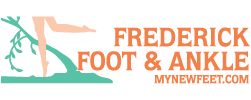TREATMENT
Platelet Rich Plasma Treatment
Platelet Rich Plasma, or is blood that is concentrated platelets. The concentrated platelets found in contain reservoirs of bioactive proteins, including growth factors that are vital to initiate and accelerate tissue repair and regeneration. These bioactive proteins initiate connective tissue healing: bone, tendon and ligament regeneration and repair, promote development of new blood vessels, and stimulate the wound healing process.
How is Therapy administered?
The entire process takes about 30 minutes. A small amount of blood is taken from the patient’s arm. The blood is then placed in a centrifuge to spin down the whole blood for approximately 15 minutes. This increases the concentration of platelets and growth factors up to 500%. The is removed and separated from the disassociated whole blood. The patient’s foot or ankle is injected with local anesthetic and the is injected into the damaged area. The injection stimulates the tendon or ligament, causing mild inflammation that triggers the healing cascade. As a result, new collagen begins to develop. As this collagen matures it begins to shrink causing the tightening and strengthening of the tendons or ligaments of the damaged area.
What can
be treated?
injections can be performed on tendons and ligaments all over the body. At Frederick Foot and Ankle we use it to treat tendons, ligaments and joints of the feet, ankles and lower leg. This includes sports injuries, arthritic joints, shin splints, tendonitis, tendon and ligament tears and plantar fasciitis.
How many treatments are necessary & how often is this therapy administered?
While responses to treatment vary, most people will require 1-3, some as many as 6 sets of injections. Each set of treatments is spaced approximately 4-6 weeks apart. There is no limit to the number of treatments you can have, the risks and side effects do not change with the number of injections.
Is right
for me?
If you have a tendon or ligament injury and traditional methods have not provided relief, then therapy may be a solution. The procedure is less aggressive and less expensive than surgery. It will heal tissue with minimal or no scarring and alleviates further degeneration of the tissues. There will be an initial evaluation with your doctor to see if therapy is right for you.
Are there any special instructions?
Refrain from non-steroid anti-inflammatory medications (NSAIDs) use one week prior to the procedure and throughout the course of treatments. Initially the procedure may cause some localized soreness and discomfort. Most patients only require some extra-strength Tylenol to help with the pain. Ice and heat may be applied to the area as needed. Your doctor will discuss weight bearing and activity restrictions if needed for your specific case. The first week after the procedure, patients will typically start a rehabilitation program with physical therapy. However, aggressive physical activity is discouraged.
How soon can I go back to regular physical activities?
therapy helps heal tendons and ligaments but it is not a quick fix. This therapy is stimulating the growth and repair of tendons and ligaments, and requires time and rehabilitation. Through regular visits, your doctor will determine when you are able to resume regular physical activity.
Does insurance pay for ?
Medical insurances do not typically cover . Some other insurance companies, such as workers compensation, may cover partial reimbursement after pre-authorization.
